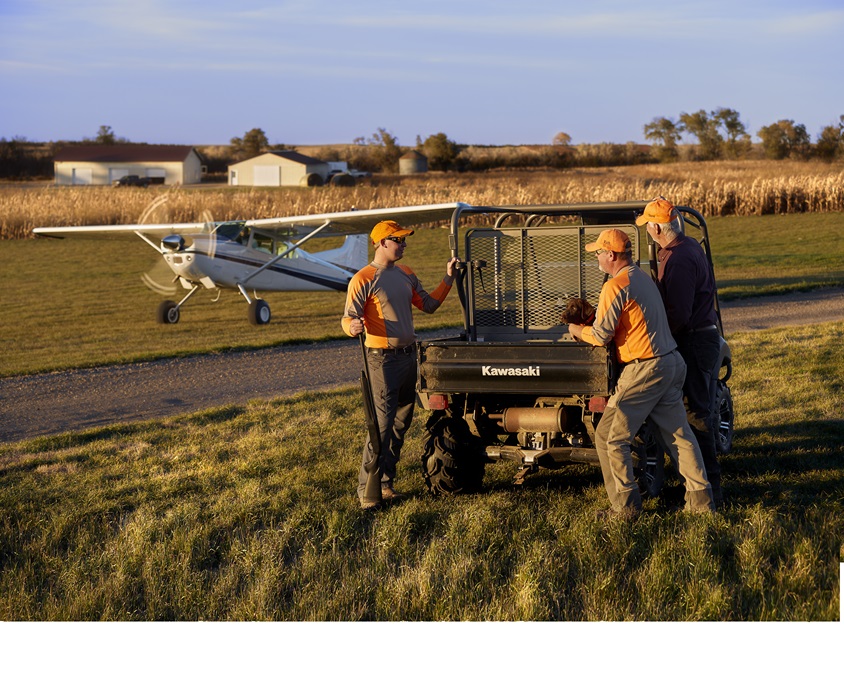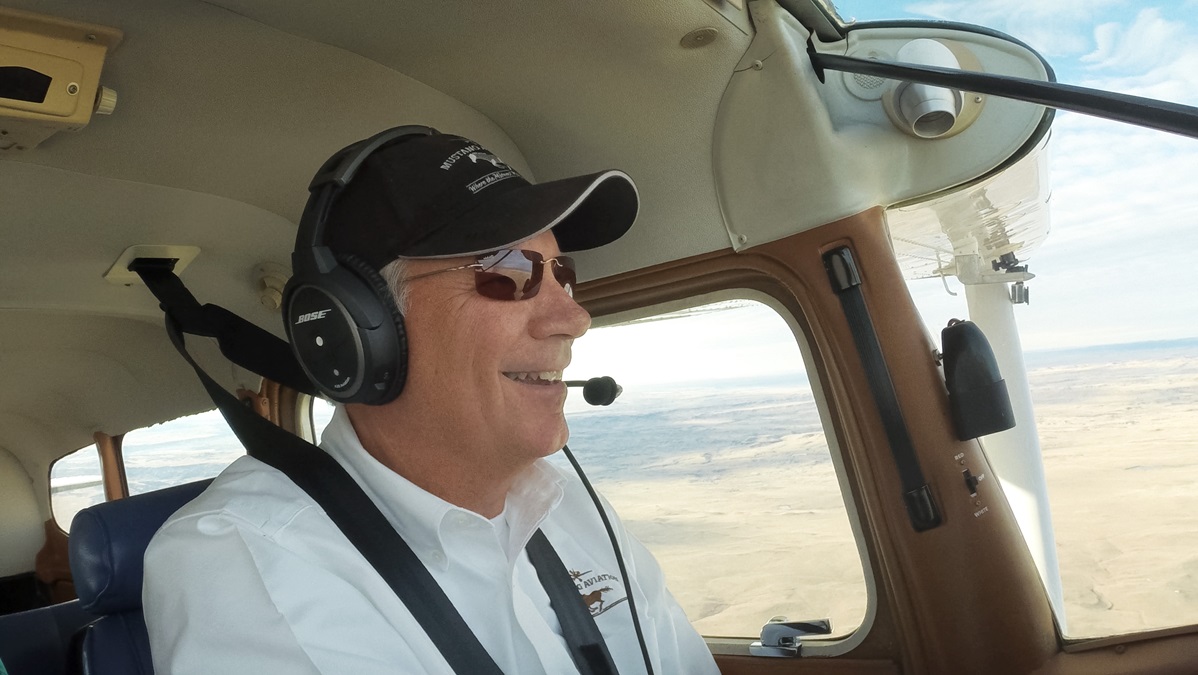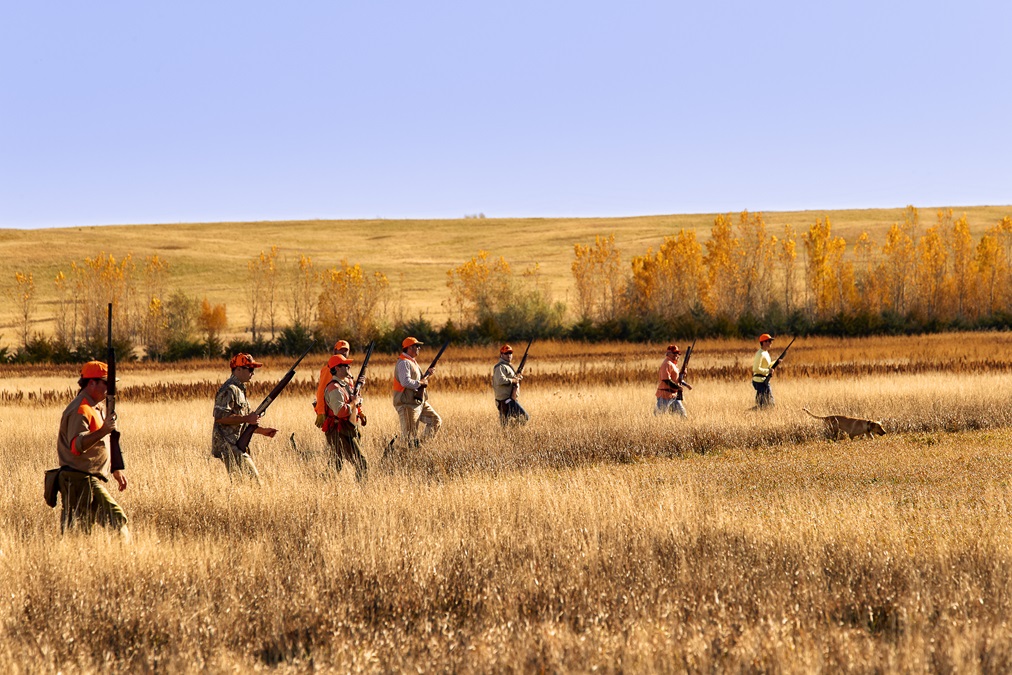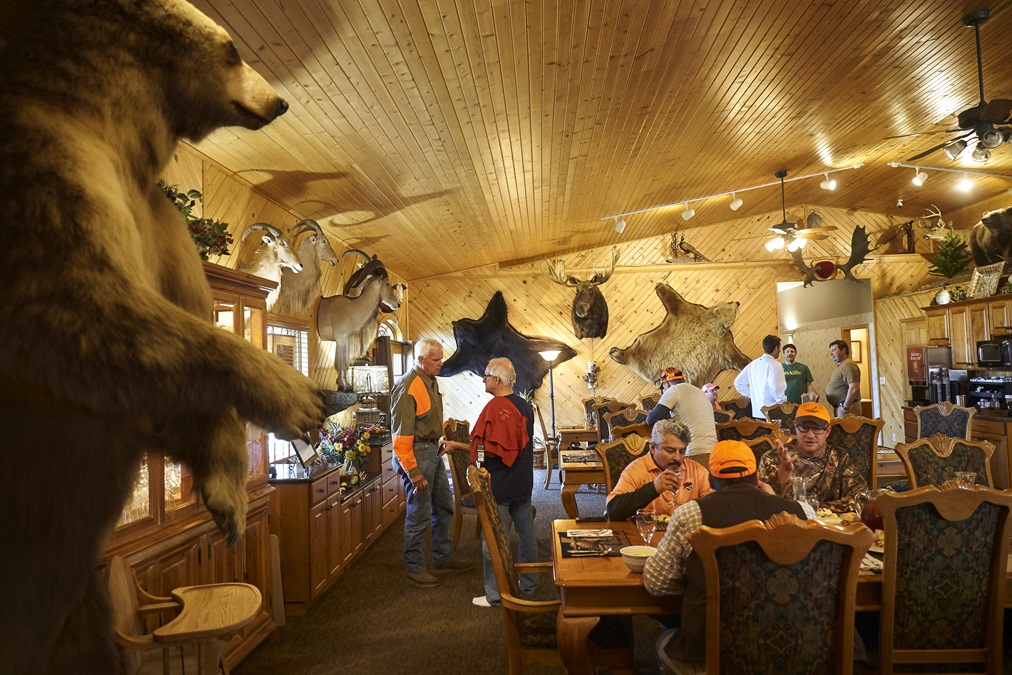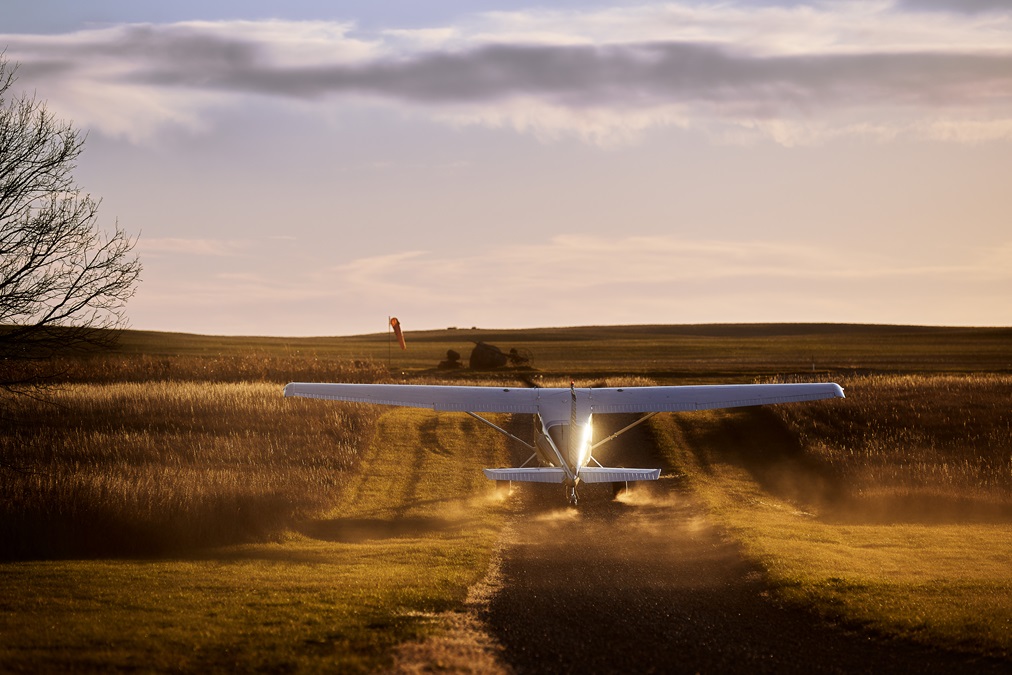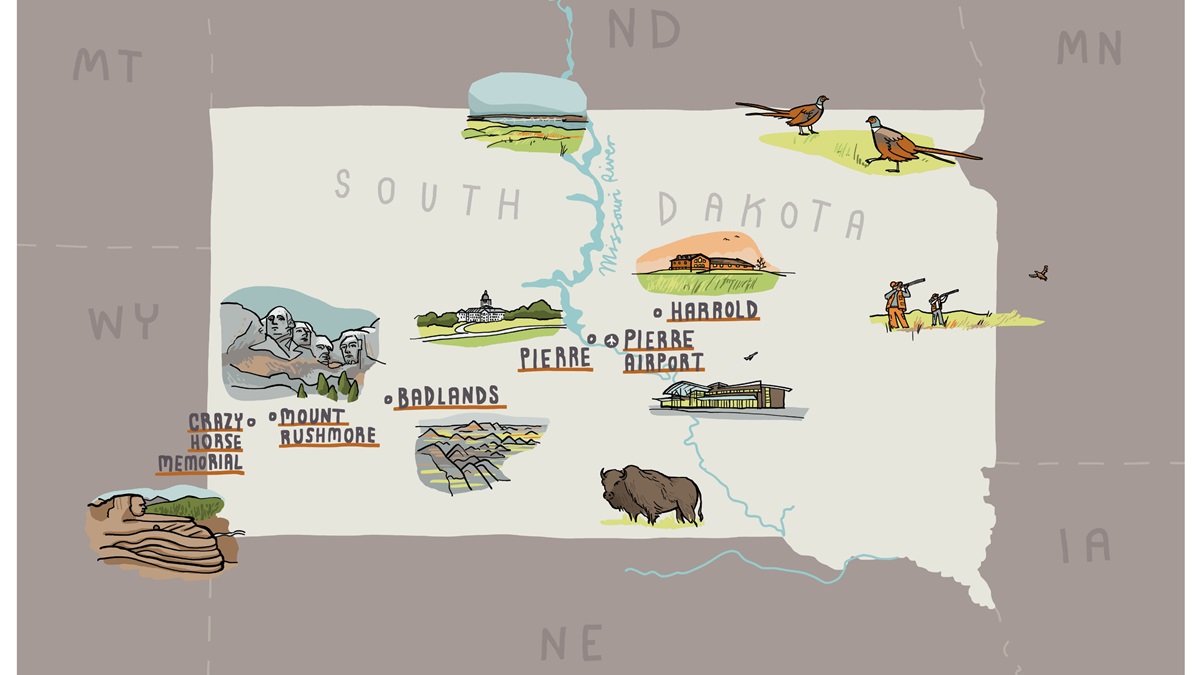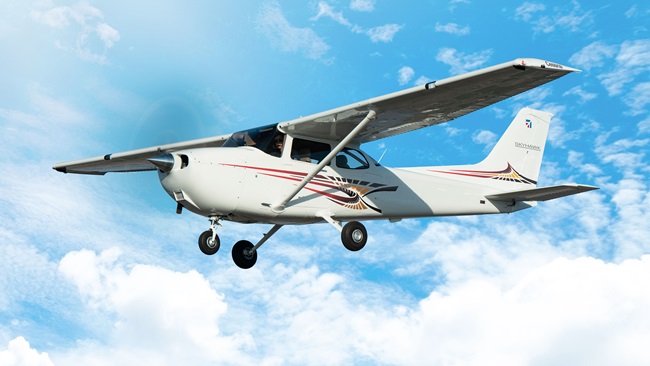The royal treatment
Flying and pheasant hunting in South Dakota
More so than a typical 180. But this is not a typical 180, nor is Peitz a typical pilot. “We’ll get off the runway in just a few feet,” he says. And, whoosh, the 300-horsepower aircraft takes off like it’s in a STOL contest and the great expanse of the South Dakota countryside lies ahead. Land of bison, the Badlands, Mount Rushmore, the mighty Missouri, and the Chinese ring-necked pheasant. If you like flying, guns, fishing, and the great outdoors, Peitz is your man. And this is his home. As his company moniker tells you: This is where the Midwest meets the Wild West.
Peitz started Mustang Aviation, the Pierre Regional Airport FBO, in 1989 after a varied career that has included farming, cattle ranching, HVAC contracting, real estate, aircraft sales, aircraft maintenance, and aerobatic performances at airshows. He’s a native South Dakotan and with his wife, Cathy, raised two children in the capital city of Pierre. If you’re from somewhere else, it may be hard to fathom that this city of fewer than 20,000 is a whole state’s capital, but the wide streets, modest buildings, and minimal commercialism belie a vibrant area that supports tourism, ranching, and defense. It’s the kind of place where, if you’re like Peitz, you appreciate the wide open spaces and quiet lifestyle—but if you’re inclined for drama, you’d seek it elsewhere.
Pheasant season
The surprise here in central South Dakota, where the Missouri River separates the farmland from the rolling hills, is the population of ring-necked pheasant. Imported more than 100 years ago, these colorful birds appreciate the land like Peitz does. They like the abundant food, the brilliant blue skies, and the room to roam. For several months of the year, this is mecca for those who like to hunt, and South Dakota’s tourism gets a boost of $683 million annually from the hunters who come to bag one or more of these glorious birds. If you really want to go all out, there’s the South Dakota Grand Slam in which you shoot and bring home ring-necked pheasant, sharp-tailed grouse, Hungarian partridge, and a prairie chicken.
Getting to central South Dakota is never easy, but general aviation is a lifeline. As Peitz puts it, he grew up a “passenger pilot”—a local term for farmers and ranchers who have airplanes. “Our major mode of transportation was an airplane. When you walked out of the house you turned right to get the car out of the garage and left to get the airplane out of the hangar.” His father, he said, turned left a lot, and so he grew up flying more than driving. He also grew up with a shotgun in his hand and fresh-caught wildfowl and waterfowl in his belly. So when the expansive ramp at Mustang Aviation at Pierre Regional Airport fills up with hundreds of aircraft and people disembarking with gun cases and camouflage clothing, Peitz is ready. “It’s harvest time—it’s pheasant season,” he said.
“Central South Dakota has one of the best displays of pheasant hunting in the world,” Peitz said. “From the beauty of the bird to the fun of watching good hunting dogs work to the camaraderie of the hunters, it’s just phenomenal.”
When the Pipers and the Beechcraft and the Gulfstreams and the Falcons arrive, Peitz watches the activity from his glass-walled office. His linemen help unload the gear—for those headed to hunting preserves, they are less likely to bring their own guns, which are supplied—although frequent hunters carry their own shotguns (see “Flying with Firearms,” page 84). The hunters congregate in the FBO where Peitz’s daughter-in-law Teresa has warm, homemade cookies prepared. If headed to one of the preserves, vans arrive to pick up the hunters. Mustang Aviation can also arrange transportation for those heading off on their own. There are two ways to embark on a hunting expedition—use one of the preserves or have a friend like Peitz who will let you hunt on his property. “There are a variety of hunting levels here. You can go to a hunting preserve or the lodges or range shoot on a family farm,” he said.
A gentleman’s sport
One of Peitz’s favorite hunting preserves is the Tumbleweed Lodge, owned by his dear friends Don and Judi Bollwig and now run by their son Michael. It’s 12,000 acres of farmland that the family works most of the year, but between mid-October and the end of December becomes a busy working lodge. Its massive 18,000-square-foot log and timber house can sleep 24 in 12 bedrooms. There’s a grand dining room that seats 30, two massive living rooms with all the overstuffed chairs and couches tired hunters can lounge on—watched over by a taxidermist’s dream of wild animals, from bear to deer to wolf to, of course, pheasant. There’s a room for playing poker, a cigar room, a steam room, a full-service bar (but absolutely no drinking is allowed when hunting during the day; nope, not even a beer with lunch), and rocking chairs line the wall-to-wall front porch. In the restaurant-style kitchen, a full staff prepares breakfast, lunch, and dinner, all of which are several courses. “You’re almost guaranteed to gain weight while you’re there. The food is very, very good,” Peitz said.
Hunting for pheasant is sometimes called the “sport of kings.” No stumbling out of bed while it’s still dark and freezing in the woods. The hunters rise late and head to the fields at 10:30 a.m., shoot for two hours, come back for a nap and lunch (or vice versa), and head back to hunt from 2:30 to 4 p.m. They are driven to the fields in comfortable vans, set up along the rough-plowed fields, and—accompanied by handlers and their dogs—escorted through the pheasant’s natural habitat. Highly trained hunting dogs flush the pheasant from their nests, wingmen and blockers keep the pheasant from escaping, and bang, purple and gold and brown birds drop from the sky. Soft-mouthed dogs gently bring in the catch and drop them at the hunters’ feet. Exhausting, really. By 5 p.m., all that fresh air and walking have hunters napping again before dinner.
“It’s a gentleman’s sport. It’s very leisurely,” Peitz said. “The slower you go, the better the hunt.”
It’s not quite as easy hunting for grouse, and at Tumbleweed, hunters are escorted farther out into the property, where it can take walking two to five miles before grouse are flushed. They are smaller and even harder to hit. But at hunting preserves throughout South Dakota, the handlers will spend the time it takes if a guest wants that all-important Grand Slam.
It’s also a different experience if you are lucky enough to know someone who will let you hunt on their property. There will be no handlers at all four corners of the field to flush the birds, and you’ll probably just have one or two trusty dogs. But, although Peitz says the pheasant are smart, there are amazing numbers of them. They are well taken care of in this area of the country; farmers purposely leave corn and grain in the fields to keep them fed and, especially at the preserves, guard against predators. The pheasant have a pretty nice life, well, until…
The other happy campers are the dogs. There are many different breeds, although the most popular are the Labrador retrievers. Training a dog is one of the great joys of life out here, and watching the dogs work is even more joyful. At hunting preserves such as Tumbleweed, the dogs live together in great kennels that are cleaned, heated, and maintained to the highest standards. Their cacophony of happy barking is deafening. They are driven out to the fields in traveling kennels and released to hunt in different groups. The ones waiting for their turn in the kennel howl with anticipation.
“If you’ve never watched a well-trained dog, it’s unique. Each dog has its own style,” Peitz said. “It’s great to watch how excited they get; it almost looks like the hunt is more fun for them than the hunters.”
At the end of a pheasant hunting trip, the exodus is a repeat of the arrival: Vans take the visitors back to the airport, where jets and turboprops and piston aircraft are waiting. Mustang Aviation linemen help load the gear back on—this time with freezer-packed boxes of birds to take home. What does pheasant taste like? “Not like chicken,” Peitz promises.
Email julie.walker@aopa.org

